
The ultimate cheese scones
- Published: 21 Nov 17
- Updated: 18 Jul 24
These light and fluffy cheese scones are easy to make and topped with a toasted cheese crust. They make a delicious savoury treat for afternoon tea or fo
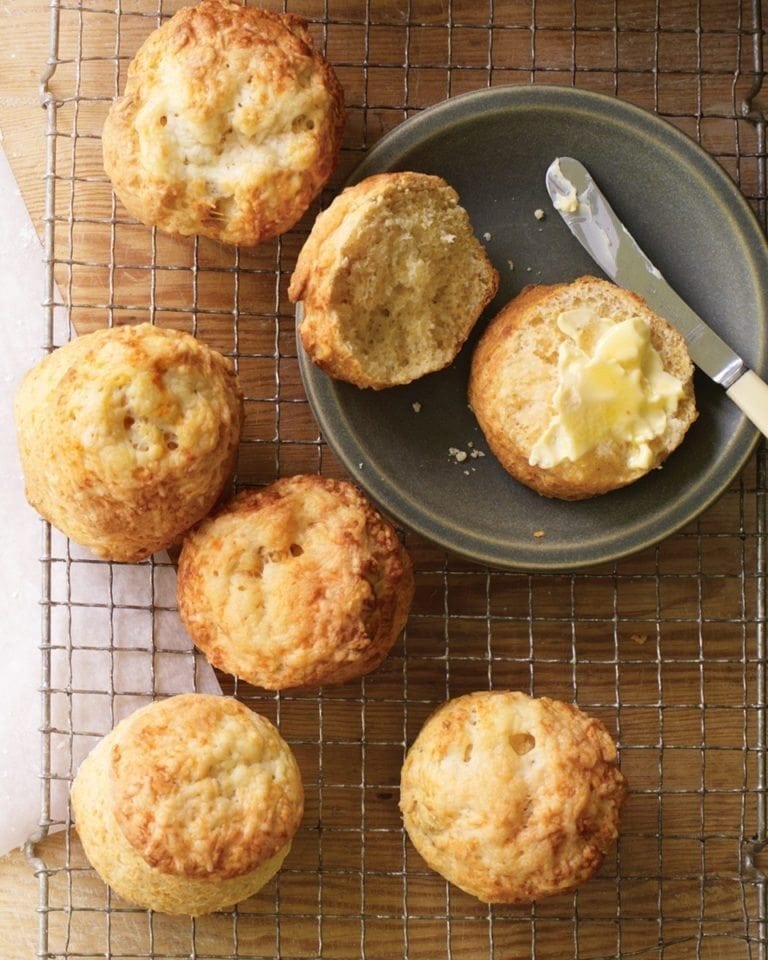
Prefer your scones sweet with jam and cream? Make our classic scones instead.
Before you start
You never knead a scone dough, as you want it to be only very lightly mixed. This is what gives them their crumbly texture.
Make sure your butter is fridge cold when you chop it and mix it into the flour. Cold fat in a dough will create a flakier texture once it’s introduced to the hot baking sheet. If you’ve got the time, put the cut scones in the fridge for 30 minutes before baking for maximum flakiness.
A few spoonfuls of finely chopped chives mixed into the dough gives the scones a pleasing garlicky flavour.
Ingredients
- 225g self-raising flour, plus extra to dust
- 1 tsp baking powder
- ½ tsp salt
- ½ tsp cayenne pepper
- 1½ tsp mustard powder
- 55g chilled salted butter, cubed
- 100g mature cheddar, finely grated, plus 50g grated
- 60ml warmed mixture of whole milk and water, plus extra milk for brushing
You’ll also need…
- Heavy-duty non-stick baking sheet
- Round 6cm plain or crinkle pastry cutter
Method
- Put the baking sheet in the oven and heat it to 220°C/200°C fan/gas 7.
- Meanwhile, sift the flour, baking powder, salt, cayenne pepper and mustard powder into a food processor. Add the cubed butter and process briefly until the mixture resembles very fine breadcrumbs. If you don’t have a food processor, put the dry ingredients in a large mixing bowl, add the butter and rub it in with your fingertips until the mixture resembles very fine breadcrumbs.
- Tip the mixture into a large mixing bowl (if it’s not already in one), then mix in the 100g finely grated cheese.
- Add the milk and water mixture to the bowl and, using a dinner knife with a cutting motion, mix everything together quickly and evenly. Bring the mixture together quickly with your hands into a smooth ball, then put on a lightly floured work surface. Resist the temptation to knead it.
- Gently press out the mixture using the heel of your hand to 2.5cm thick. Cut out 4 scones using your cutter. Gently press the offcuts together and cut out 2 more scones. Shape any remaining dough into a small disc (the cook’s perk!).
- Brush the tops of the scones with milk and sprinkle with the remaining 50g grated cheese. Remove the hot baking sheet from the oven, put the scones on it, spaced well apart, then bake for 12-14 minutes until richly golden and cooked though.
- Remove the scones from the oven and serve as soon as possible after baking, ideally spread with a little butter.
- Recipe from October 2017 Issue
Nutrition
- Calories
- 287kcals
- Fat
- 14.6g (8.8g saturated)
- Protein
- 8.5g
- Carbohydrates
- 29.5g (0.7g sugars)
- Fibre
- 1.5g
- Salt
- 1.4g
FAQs
Can I use self-raising flour to make these cheese scones?
Yes, the recipe already uses self-raising flour.
What do you have on cheese scones?
Butter, marmite, more cheese all work well. Or treat your scone like a mini sandwich with added ham, smoked salmon and cream cheese etc.
How should you serve cheese scones?
Serve them warm with butter or your favourite savoury toppings. Or as a side to winter soups.
What cheese should I use?
Cheddar and gruyere make good choices or a combination of both.
What is the secret to making good scones?
Keep everything as cold as possible, mix/work the dough as little as possible and preheat the baking tray (this helps kickstart the baking for good rise and crusty base).
Are these scones suitable for freezing?
Yes, cook, cool and wrap well before freezing. Defrost at room temperature then reheat in a low oven for 5-10 minutes to refresh and warm through.
delicious. tips
Watch how to make them here:
The scones are best eaten warm the day they’re made but will keep in an airtight container for up to 24 hours or in the freezer for up to 1 month. Defrost thoroughly.

This set of five robust stainless steel round cookie cutters is a must-have for every budding baker. From making biscuits and pastry cases to mince pies and scones, these versatile cutters in a range of sizes can handle it all.
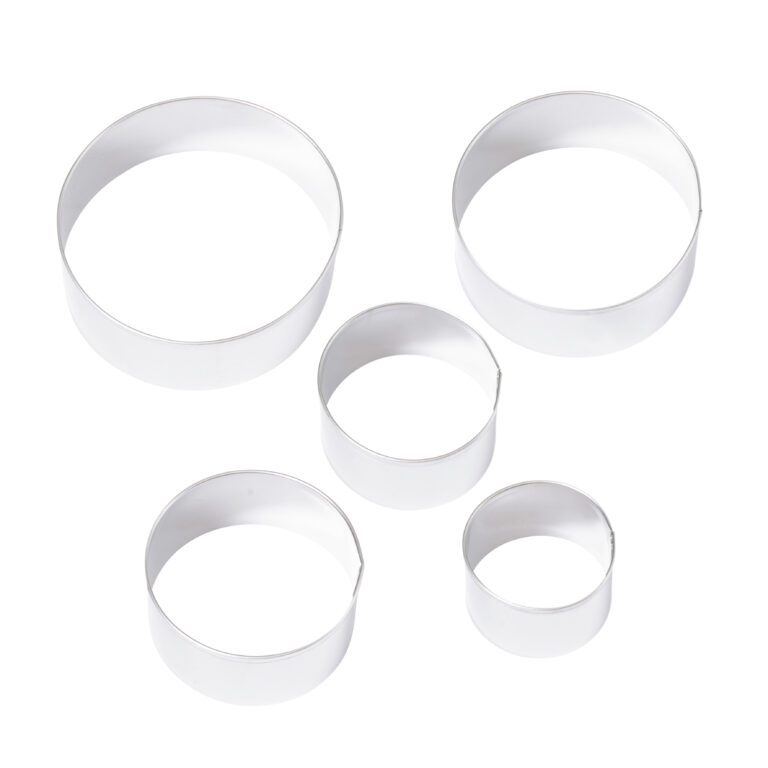
Price correct April 2024
Buy ingredients online
Rate & review
Rate
Reviews
Share a tip
Subscribe to our magazine
Food stories, skills and tested recipes, straight to your door... Enjoy 5 issues for just £5 with our special introductory offer.
Subscribe
Unleash your inner chef
Looking for inspiration? Receive the latest recipes with our newsletter

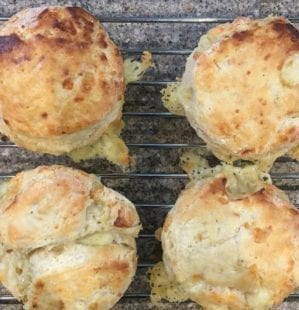
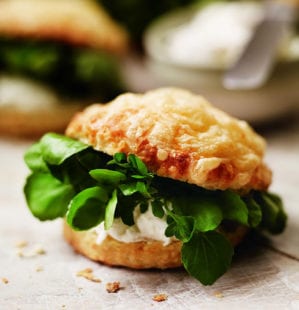
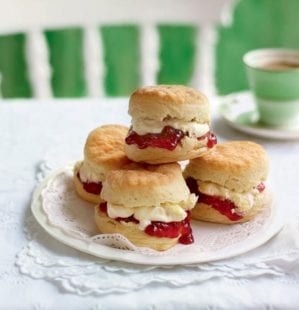
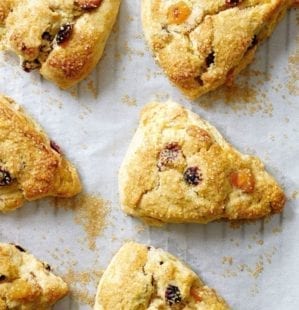
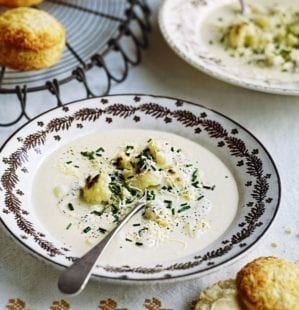
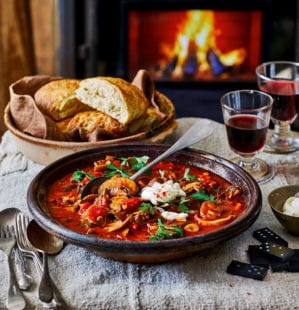
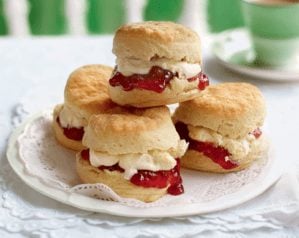
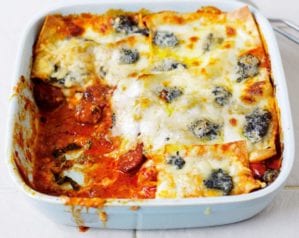

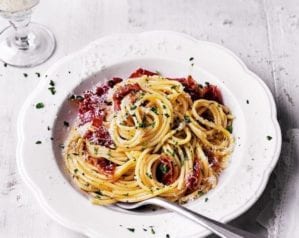
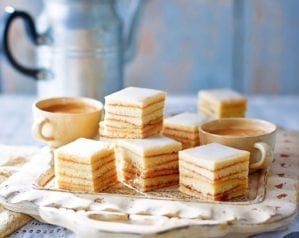
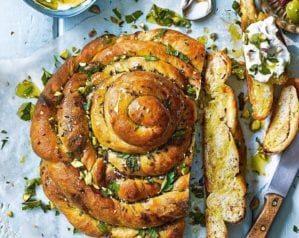

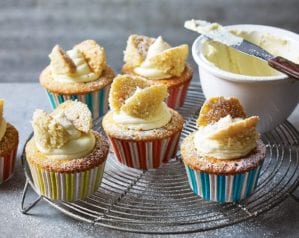
Beautiful scones, but did find I needed to more milk. The mixture didn’t bind well with just 60mls. Other similar recipes have about double the amount of liquid. But it didn’t stop them being absolutely delicious!
These are beautiful . I changed my cheese from just cheddar to a mixture of provolone picante and cheddar . It makes them properly cheesey .
The recipe should say 60 mils each of milk and warm water 120mls I read it as
60 mls in total and obviously it didn’t work.
Hi Diana. Thanks for your feedback! We’re going to re-test the recipe and get back to you! Thanks, Thea.
Great recipe; can’t go wrong with Delicious Magazine! I did add a little parmesan after a recommendation from a friend and they were amazing!!
Thanks for the feedback Elspeth, so glad you loved our cheese scones!
I found the measurements to be just right – the mix came out doughy but not sloppy.
I added about 1/4 of a greated onion.
delicious ♥ warm with butter.